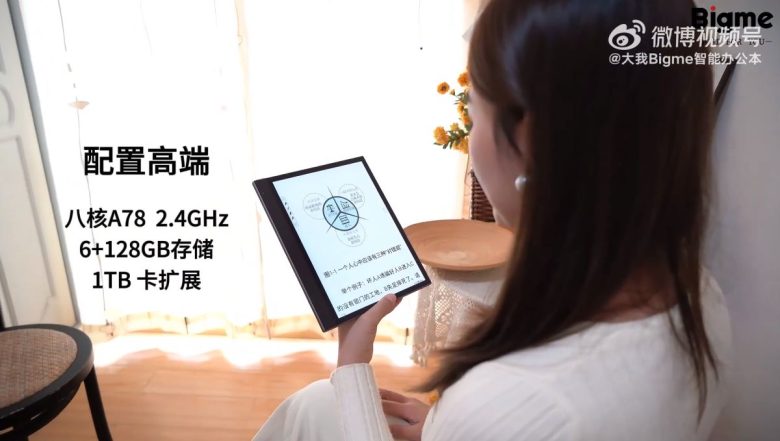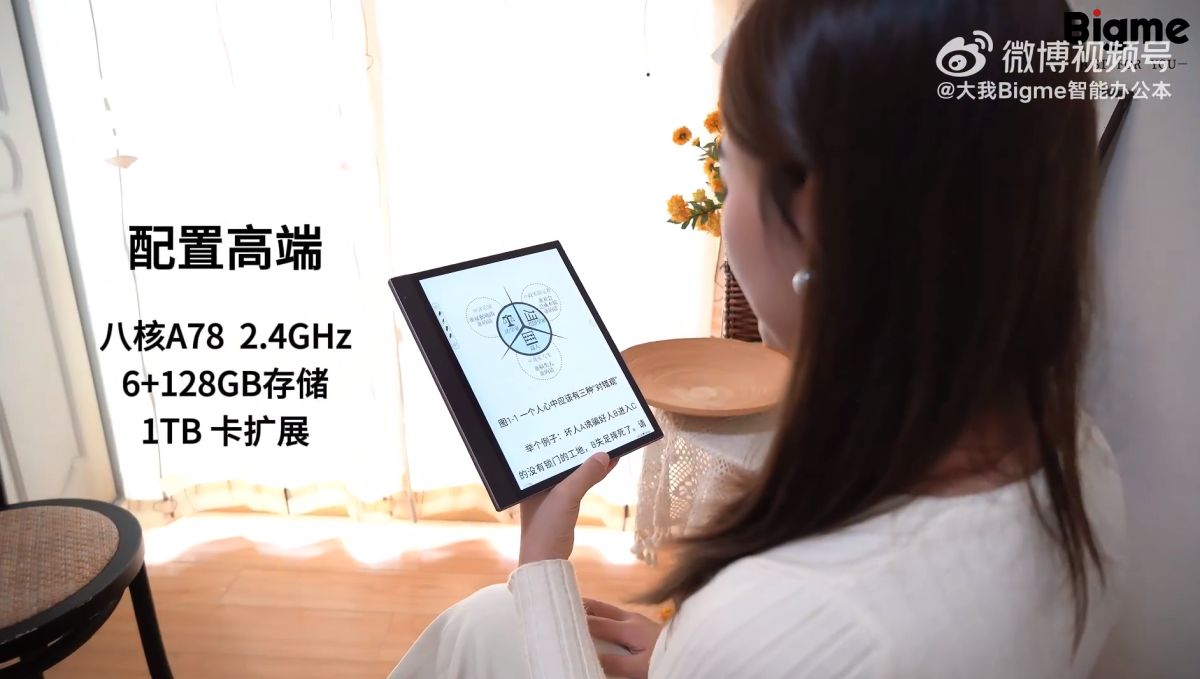Bigme InkNote X Color is a 10.3 inch E Ink tablet with pen support and a Dimensity 900 processor
2024-03-19 / News / 15667 Sees / 0 CommentsThe Bigme InkNote X Color is a 10.3 inch Android tablet with an E Ink Kaleido 3 color display that’s designed not just for reading, but also for writing thanks to support for pressure-sensitive pen input.
At first glance the Chinese company’s latest eNote looks a lot like the InkNote Color that I reviewed a few years ago. But the new model has a higher-quality display and a much faster processor that should make it feel more like a tablet and less like a glorified eBook reader.

Under the hood, the new InkNote X Color is powered by a MediaTek Dimensity 900 processor, which is an octa-core chip with:
2 x ARM Cortex-A78 CPU cores @ up to 2.4 GHz
6 x ARM Cortex-A55 CPU cores @ up to 2 GHz
Mali-G68 MC4 graphics
That’s a significant upgrade over the MediaTek Helio P35 chip used in the Inknote Color that I reviewed in 2022. That processor had eight Cortex-A53 cores and PowerVR GE8320 graphics.
Another upgrade? While the older tablet shipped with a heavily customized version of Android 11, the new model comes with Bigme’s version of Android 13 that’s been optimized for E Ink displays.
And the new tablet also has an E Ink Kaleido 3 display rather than the first-gen Kaleido screen used on the older model.

Other specs remain largely the same, including 6GB of RAM, 128GB of storage, a microSD card reader, a 4,000 mAh battery, fingerprint sensor, USB-C port, and an 8MP rear camera and 5MP front camera (making Bigme’s InkNote tablets some of the only E Ink tablets to feature cameras at all).
E Ink displays are popular for eBook readers and eNotes due to their paper-like qualities: they’re high-contrast, low power screens that can easily be viewed in direct sunlight since they don’t need a backlight for illumination, and instead rely on ambient light (although the InkNote X Color, like most modern E Ink devices, also has front-lights that shine on the screen to make it bright enough to view in dark or dimly lit environments).
But there are some down sides. They have slow refresh rates and limited color. Up until recently most E Ink displays supported 16 shades of grey, but no color. Kaleido displays apply a color filter over a black and white screen for up to 4096 colors, but those colors tend to look more like faded news print than the vibrant colors you’d get from AMOLED or LCD displays.

Still, by moving to Kaleido 3, Bigme’s new tablet should be a bit brighter, while offering higher pixel density: instead of 226 pixels per inch for black and white and 117 for color, the new tablet supports 300 pixels per inch in black and white and 150 pixels per inch in color.
Don’t expect to use this tablet for watching videos or playing games though: it only supports refresh rates up to 15 frames per second, and you’ll have to sacrifice some visual quality if you want to go even that fast. Images will look best if refresh rates are capped much lower than that.
Bigme hasn’t announced international pricing or availability yet, but the Bigme InkNote X Color should be available in China soon for 4,799 CNY (about $670).



More about“Bigme InkNote X Color,”'s article.
The original address《Bigme InkNote X Color is a 10.3 inch E Ink tablet with pen support and a Dimensity 900 processor》